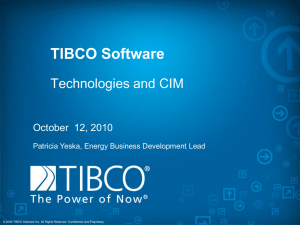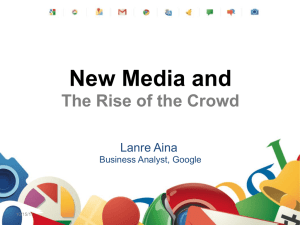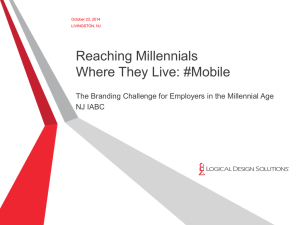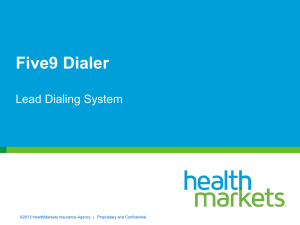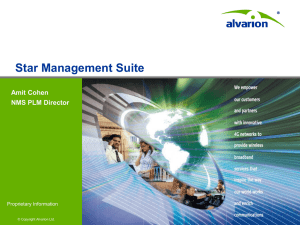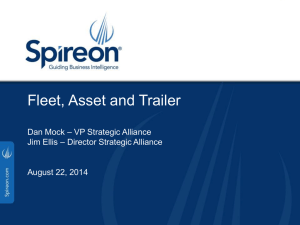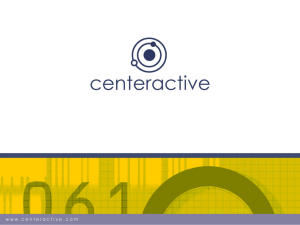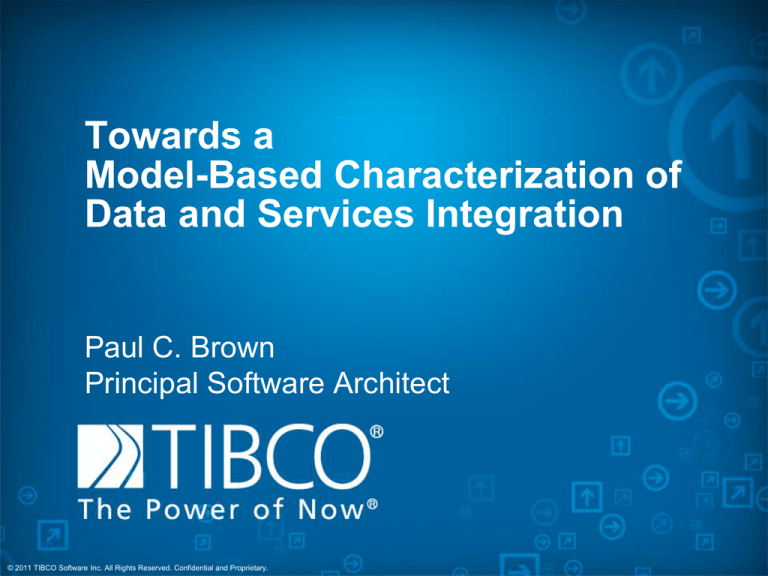
Towards a
Model-Based Characterization of
Data and Services Integration
Paul C. Brown
Principal Software Architect
© 2011 TIBCO Software Inc. All Rights Reserved. Confidential and Proprietary.
Context: Interacting Systems
Response
: System A
reference
2
© 2011 TIBCO Software Inc. All Rights Reserved. Confidential and Proprietary.
Request
: System B
service
Overlapping Information Views
3
© 2011 TIBCO Software Inc. All Rights Reserved. Confidential and Proprietary.
Multiple Schemas
4
© 2011 TIBCO Software Inc. All Rights Reserved. Confidential and Proprietary.
Domain Model: Conceptual Abstraction
Concepts,
relationships, key attributes
5
© 2011 TIBCO Software Inc. All Rights Reserved. Confidential and Proprietary.
Mapping Concepts to Representational Schema
Concepts,
relationships, key attributes
6
© 2011 TIBCO Software Inc. All Rights Reserved. Confidential and Proprietary.
Concepts are not Uniform: Mapping is Required
7
© 2011 TIBCO Software Inc. All Rights Reserved. Confidential and Proprietary.
Representational Mappings Derived from Concepts
8
© 2011 TIBCO Software Inc. All Rights Reserved. Confidential and Proprietary.
Conceptual Mappings Derived from Abstractions
9
© 2011 TIBCO Software Inc. All Rights Reserved. Confidential and Proprietary.
Information has an Inherent Network Structure
10
© 2011 TIBCO Software Inc. All Rights Reserved. Confidential and Proprietary.
Communication Schemas Tend To Be Tree Structured
Sales Order Status Interface
Sales Order Service Interface
+getOrder( request : Get Order Request ) : Get Order Response
+orderShipped( notification : Order Shipped Notification )
...
...
Get Order Request
Get Order Response
Order Shipped Notification
-orderID
Sales Order
-datePlaced
-orderID
-/status
-customerID
-customerName
-shipTo
-billTo
Shipment Notice
-shipmentID
-dateShipped
-orderID
Shipment Line Item
Address
1..*
-itemID : SKU
-quantity
-orderLineID
-shipmentLineID
Sales Order line Item
-itemID : SKU
-quantity
-price
-/status
a) getOrder() Operation
11
© 2011 TIBCO Software Inc. All Rights Reserved. Confidential and Proprietary.
b) orderShipped() Operation
Information Realities
Canonical
data model myth
One size does not fit all: complete concept vs. reference
Vocabularies
vary
Think about the multiple meanings of “attribute”
“Procedure” to a physician vs. health insurance company
Information
evolves
Medical procedure code change ICD-9 ICD-10
Versioning is important
Information
is replicated
Consistency is an issue
12
© 2011 TIBCO Software Inc. All Rights Reserved. Confidential and Proprietary.
Data-Related Model Requirements
Network- and tree-structured representational schema
(e.g. database schema, XSDs, JSON, record formats)
Mappings between representational schema
Abstracted models of concepts and relationships
Independent of representational schema
Mappings between the abstracted concepts and
representational schema
Flexible vocabulary
One concept many terms
One term many concepts
Versions of representations and mappings
Mappings whose expression requires some form of
computation
13
© 2011 TIBCO Software Inc. All Rights Reserved. Confidential and Proprietary.
Service Realities
Many
operations are not pure functions
Operate on persistent state (information) managed by the
service
Operations
are not independent
Sequencing constraints, business rules
Services
often house cached data
Cache update protocols and timing
Impact on service operations
Vocabulary
(terminology) varies and overloaded
Particularly between organizations
Services
evolve
Versioning is important
14
© 2011 TIBCO Software Inc. All Rights Reserved. Confidential and Proprietary.
Service-Related Model Requirements
Representation of:
Services and their interfaces
Service operations and their data structures
State and state instances
Relationship between service operations and service state
Dependencies between service operations
Versions and mappings between versions
Abstracted concepts related to services operations
Mappings between concepts and concrete service models
Flexible vocabulary
Mappings whose expression requires some form of
computation
15
© 2011 TIBCO Software Inc. All Rights Reserved. Confidential and Proprietary.
Process (Service Utilization) Context
16
© 2011 TIBCO Software Inc. All Rights Reserved. Confidential and Proprietary.
Process (Service Utilization) Realities
Services
may be involved in multiple processes
Protocol
semantics must be understood
REST, SOAP, XML over JMS, HTTP, file transfer, etc.
Coordination
must be understood
Fire and forget to distributed transactions
17
© 2011 TIBCO Software Inc. All Rights Reserved. Confidential and Proprietary.
Process (Service Utilization) Model Requirements
Observable
behavior of the service as viewed
through its interfaces
Service
usage scenarios
Sequencing
and dependency constraints between
service operations
Coordination
of activities between components
Versions
of observable behavior, usage scenarios,
sequencing, and coordination
Mappings
between versions
18
© 2011 TIBCO Software Inc. All Rights Reserved. Confidential and Proprietary.
UML Can Satisfy Many Modeling Requirements
UML
can represent concrete things
Data structure schema
Services, operations, state machines
UML can represent abstractions
Concepts and Relationships
How do we model mappings and
multiple vocabularies?
19
© 2011 TIBCO Software Inc. All Rights Reserved. Confidential and Proprietary.
Semantics of Business Vocabulary and Rules (SBVR)
20
© 2011 TIBCO Software Inc. All Rights Reserved. Confidential and Proprietary.
Semantics of Business Vocabulary and Rules (SBVR)
Abstract
concepts and
relationships
Concrete schema
and other
representations
21
© 2011 TIBCO Software Inc. All Rights Reserved. Confidential and Proprietary.
SBVR Can Complete the Modeling Picture
SBVR
can represent mappings (simple and
complex)
SBVR
handles multiple vocabularies for concepts
SBVR
can be used to relate multiple UML
representations
22
© 2011 TIBCO Software Inc. All Rights Reserved. Confidential and Proprietary.
What We Need
Uniform approach to modeling
Abstract and concrete concepts and relationships
• Multiple domains with relationships
Bi-directional Mappings
•
•
•
•
Abstract concrete models
Concrete concrete models
Concrete models actual schema
Schema schema mappings
Versioning at all levels + mappings between versions
Tooling
Schema Concrete model + schema-model mapping
Concrete mappings schema mappings (e.g. XSLT)
Abstract mappings concrete mappings
UML and SBVR seem to have the required building blocks!
23
© 2011 TIBCO Software Inc. All Rights Reserved. Confidential and Proprietary.

